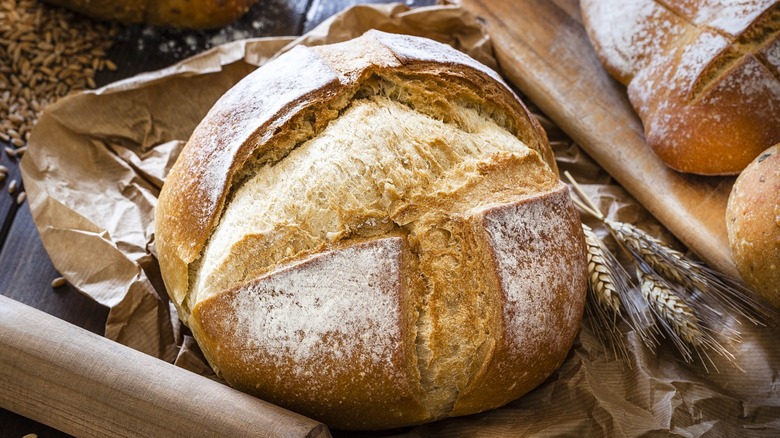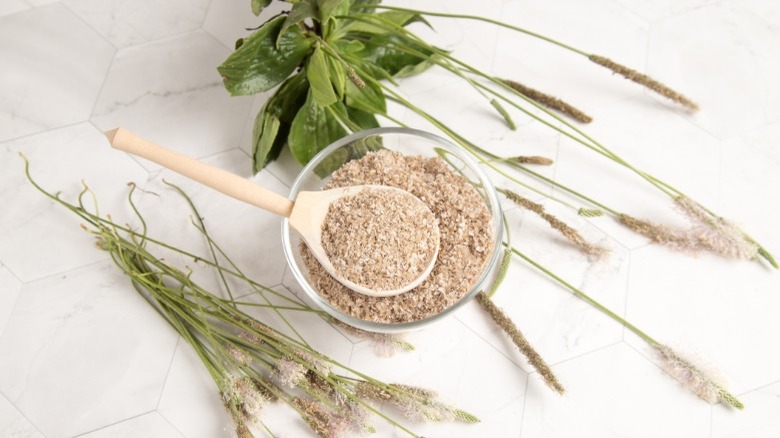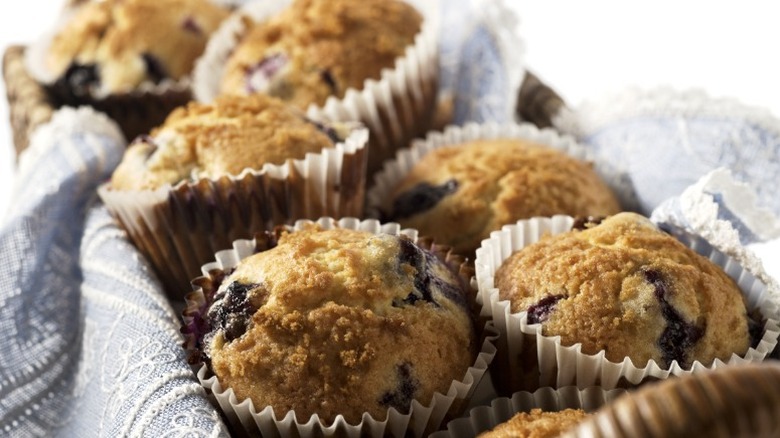For Better Gluten-Free Bread, Reach For Psyllium Husks
When store-bought gluten-free bread gets expensive, many turn to making it at home. But, even for the most experienced bakers, crafting a loaf of gluten-free bread from scratch is a feat. Without the traditional proteins that normally give bread its rise, trying to get that fluffy and airy texture at home is hard — that is, unless you know what ingredients to use. To ensure you'll get the best results on your next bread-making project, psyllium husks may be the special addition you're looking for.
The ingredient is a fiber made from plants that, when combined with water, becomes elastic and sticky — like a copy-cat of gluten. As the dough rests and the yeast is given time to expand, the psyllium husk creates that structure normally achieved. In the end, you'll be left with a loaf of bread that's perfectly light and crisp and similar to the good stuff you'd buy at the store since some gluten-free brands utilize psyllium husks as well.
The basics of psyllium husk and how it works
As the name suggests, psyllium husk is the outer shell of the seeds of an herb grown in India called the Plantaga ovato. As mentioned, it's rich in fiber, which means that, when it's added to gluten-free recipes, it becomes a thickening agent. The reason behind this is because it's classified as a hydrocolloid, or something that attaches to water and forms a gel.
In bread dough, the psyllium husk acts as a binding agent ,which allows the dough to proof and be kneaded like normal bread. Most recipes will have you mix your psyllium husk with water to form a gel before it gets added to the other ingredients — kind of like a flax egg. This is important because when you form your psyllium gel first, you can avoid the 45 minutes you'd normally have to wait to allow the husks and the gluten-free flour to become hydrated. And that's essential since hydration helps make the dough easier to knead.
When you go to the store looking for psyllium husk, it's best to buy whole husks rather than the powder you may also see on the shelf in the gluten-free baking aisle. The powder can clump together, and may not be as easily incorporated into the dough. It can be confusing because whole psyllium husks look ground down to begin with; but this version is much coarser and easier to work with.
Psyllium husk isn't the best for other gluten-free baked goods
Unfortunately, psyllium husks' magical powers don't necessarily extend to other gluten-free baked goods and desserts. For cakes, cookies, and muffins, the binding ingredient you'll need instead of the husk is xanthan gum. This powder add-in is one you may have seen on packaged food labels, and is actually a type of sugar made through the process of fermentation. Much like psyllium husks, xanthan gum is a hydrocolloid agent, the property that makes it elastic and stretchy in gluten-free bakes. Here too, xanthan gum replaces the role of gluten and acts as a binding agent that will add texture, moisture, and structure that gluten-free goodies need to replicate their traditional counterparts.
When using xanthan gum in your next bake, it's important to check your flour blend first to ensure you're not using too much of the additive, as many gluten-free flour substitutes already contain it. If you are using a mix that already has it incorporated, the best practice is to decrease the amount of xanthan gum you're using by a 1/4 teaspoon per 1/2 cup of flour. If you are making cakes or cookies with gluten-free flour that already has the gum, there's no need to add more. But, if you're making pastries that require more stretchiness in the dough, add xanthan gum — about 1/4 teaspoon per 1 cup of flour. Even big retailers like Target and Amazon sell xanthan gum, so it's easy to incorporate.



